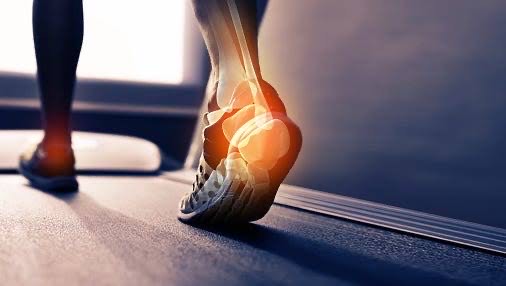Experiencing aching pain in the legs upon walking which causes you to stop for sometime can be pretty uncomfortable in everyday life. There could be several possible causes of pain in the legs, but one should be familiar with the most common: peripheral artery disease.
PAD is one of the common problems of the circulatory system, in which narrowed arteries reduce blood flow to your limbs. So, in general, PAD is caused by the buildup of fatty deposits in the lining of your artery, also called atherosclerosis. This restricts blood and oxygen flow to the legs and feet. This condition mostly remains undiagnosed because it has symptoms that may sometimes be so subtle and simple, like leg pain; however, it is a serious health condition that requires immediate medical attention.
How is acute leg pain related to PAD?
Intermittent claudication is one of the significant symptoms of PAD. It is cramping or pain in leg or arm muscles associated with exercise or activity and relieved by rest. This happens when there is not enough blood flow to the muscles and, therefore, they cannot meet the oxygen requirement during exercise.
Causes:
The most frequent cause of PAD is a condition in which plaque builds up in the walls of arteries, or atherosclerosis, which is a result of:
l Smoking: Damage is caused to the inner lining of arteries by smoking, allowing plaque to accumulate and stimulating the arteries to go into spasm or constrict.
l Diabetes: Elevated sugar levels in the blood can cause damage to blood vessels and further expand the plaque buildup.
l High cholesterol: If you have too much cholesterol in your blood, it deposits into the inner walls of the arteries, causing atherosclerosis.
l Hypertension: Over the years, this condition weakens the arteries enough to make them prone to atherosclerosis.
l Obesity: It increases the person’s risk of developing conditions such as diabetes and hypertension, increasing the chance of PAD.
l Age: The risk of PAD increases with age; the most common is above 50 years.
l Family history: A family history of vascular disease raises your risk of having a condition.
Symptoms:
The symptoms of PAD vary, but common ones include:
l Leg pain: This includes pain in the calf, thigh or buttocks after walking for sometime.
l Coolness in the lower leg or foot: This proportionally is more than in the other leg.
l Sores or wounds: Poorly healing sores or wounds on the toes, feet, or legs.
l Colour changes: The colour changes in the legs; this is often a sign of reduced blood flow, specially black tissues, known as gangrene.
l Hair loss or slower hair growth on the feet and legs
l Weak pulse in the legs or feet.
Prevention:
The only way to prevent PAD is to control or reduce the risk factors that lead to atherosclerosis. Quitting smoking, managing diabetes, controlling cholesterol and blood pressure, maintaining a healthy weight, exercising regularly and having a heart-healthy diet that is low in saturated fats, cholesterol and sodium may help prevent the disease.
Peripheral artery disease treatment:
Angioplasty and stenting: A small balloon is taken in the artery through a puncture and inflated. The balloon compresses the blockage and opens up the artery. The balloon is then removed, following which, a stent may be placed that keeps the artery open.
Bypass surgery: Using a vessel from another area of the body or the synthetic vessel, a graft bypass is created to take blood around the blocked artery.
Atherectomy: A catheter with a sharp blade at the end is inserted into the affected artery and the plaque is shaved off as a result.
Treatment for acute pain in legs: For patients suffering from acute leg pain with coldness, colour changes or loss of power, the cause may be sudden formation of clots. These should be removed immediately by surgery, to prevent loss of limbs or amputations.
PAD is a serious situation; if left untreated, it causes very painful sensations in the legs or other complications that might arise. It is very important to know the risk factors, symptoms, prevention strategies, and treatment options available for managing PAD. If one has leg pain while walking, or non healings wounds with pain, it would be very important to see a doctor to rule out PAD as an underlying cause and determine appropriate treatment measures.
(The author, Dr. Tapish Sahu, is the HOD of Vascular And Endovascular Surgery, at Manipal Hospital.)




